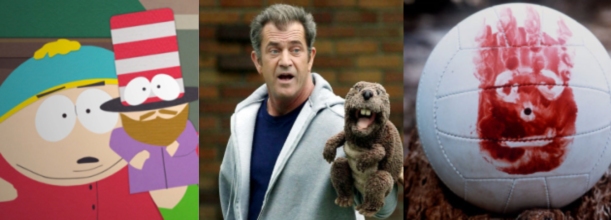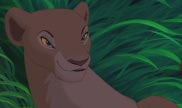Anthropomorphise this! The personification of objects in cinema

As you are probably aware, it has been euphamistic hot property for some time now, Mel Gibson is set to appear in Jodie Foster’s The Beaver. The film stars, along with Gibson and Foster, a mangey beaver puppet sourced from the local skip to assist Gibson with his marital woes. Cast in a leading role, Jodie Foster’s tatty beaver got us thinking about other inanimate objects – and animals – left to basically save the day.
While most film-makers make do with a cast of boringly human anthropoids, or Adam Sandler if they’re desperate, some directors take a chance on something resolutely less conventional. While we have been anthropomorphising things for decades, it is really only when somebody points a camera (or pencil) at them that they really come to life. Just look at Sarah Jessica Parker.
As such, we here at Best for Film Towers have taken it upon ourselves to praise these unsung heroes for giving us hope that one day, if we eat all our vegetables and clean behind our ears, we might get to communicate intelligently with something that doesn’t have broccoli in its teeth and occasionally asks that we pull its finger.
Puppets

Unlike Jews, women and the media, fictional puppets still appear to be on Mel Gibson’s side. Before there was The Beaver, however, Hollywood has had its hand up a number of knitted backsides in its pursuit of anthropomorphised children’s play things, often to hilarious or truly disturbing effect. Any perusal of your DVD collection, or The Daily Mail’s sensationalist nightmares for that matter, will likely unearth a number of puppetous characters both beloved and befeared. While Walt Disney’s Pinocchio is the archetype, featuring a wooden likeness that just wants to be a real boy, there is also Chucky, who just wants to kill a real boy, and Mr. Garrison’s right hand, which just wants to – well, we’ll leave it at that.
Objects

Branching out from puppetry, Hollywood has also often utilised entirely inanimate objects in its pursuit of loveable cartoon characters and bloodied sports equipment. With Beauty and the Beast transforming your entire kitchen into Happy Meal filler, there were almost too many anthropomorphised appliances to choose from. Good thing, then, that Lumiere steals the show, and the movie, after lighting the candle at both ends with ‘Be My Guest’. Also worthy of mention is Cast Away‘s Wilson, Tom Hanks’ mid-life crisis in volleyball form, and carpet, a loyal magic carpet that has no problem communicating enthusiastically with Aladdin‘s semi-sentient monkey.
Robots

While you might have filled this section with MICHAEL BAY’s assorted Transformers, I am instead going to pretend that they never existed. It’s a coping mechanism. Why waste precious words with pixellated nonsense when there are such robotic splendour as Wall.E, C3PO and Johnny 5 to praise instead? Wall.E, a mere constellation of beeps and whirls, is an absolute delight, an endlessly compelling and surprisingly romantic protagonist that puts his boneless human peers to shame. C3PO, however, titters on human form, only to have all expression robbed from him by a severe lip and eyebrow deficiency. Nevertheless, he is every bit the prissy pleasure as he could ever have been in the flesh. Short Circuit, meanwhile, is forever engrained on our collective conscious, quite despite the fact that barely anyone can actually remember having seen it.
Concepts

Not all anthropomorphism paints a face on toys or sporting equipment, however, with a number of unforgettable characters having been rendered from simple ideas. Who can forget Salma Hayek’s shit-demon-trouncing turn in Kevin Smith’s Dogma, a film in which she played Serendipity. Death, meanwhile, has cropped up all over the place, whether as a Grim Reaper-esque figure in (don’t say Scream!) Harry Potter and the Deathly Hallows: Part I, Monty Python or A Christmas Carol as the embodiment of the future Christmases. Don’t let our list so far fool you into thinking that anthropomorphism has to be so tangible. As the imbuing of human properties to non-human animals, objects or concepts, the process of anthopomorphising needn’t require a face at all. Just look at Final Destination, death might not stalk the halls in the literal sense, but it has nevertheless been attributed human behaviours such as stealth and a wicked sense of humour.
Miscellaneous

What does that leave us with, then? The dregs, I suppose, with a series of anthropomosphised characters that defy categorisation altogether. Animals have been attributed emotion and personality for decades, a narrative device that requires its own feature altogether. Skippy, Flipper and Lassie are three particularly unexhaustive examples that serves to illustrate the sheer breadth of instances. Hollywood, meanwhile, has moved on from cats, dogs, electric pocket monsters and Kung-Fu Pandas to throw personality at a kitchen sponge, a sentient sports car and some experimental green gloop. For the most baffling displays of anthropomorphism in cinema, why not tune into the adventures of Cars, The SpongeBob SquarePants Movie or Flubber.





Recent Comments